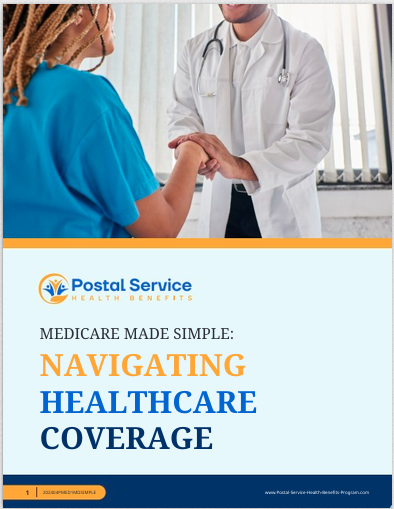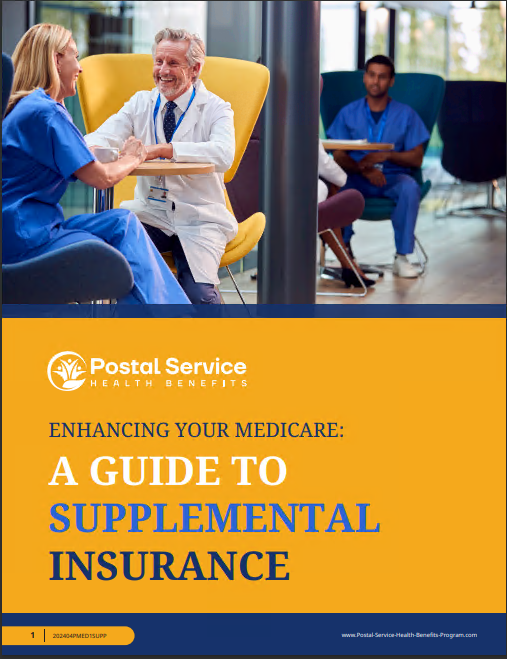Key Takeaways
- The Postal Service Health Benefits (PSHB) program works alongside Medicare to provide comprehensive healthcare coverage for retiring postal employees.
- Understanding how to navigate PSHB and Medicare options can help ensure smooth healthcare transitions during retirement.
Retiring from the Postal Service? Here’s How PSHB and Medicare Work Together
Retiring from the U.S. Postal Service comes with a range of considerations, particularly when it comes to healthcare coverage. The Postal Service Health Benefits (PSHB) program, designed exclusively for postal employees, offers robust options. However, many retirees also become eligible for Medicare, creating a need to understand how these two programs interact. Navigating both PSHB and Medicare can feel complex, but by understanding how they work together, you can ensure you have the right coverage to meet your needs in retirement.
What is the Postal Service Health Benefits (PSHB) Program?
The PSHB program is a tailored healthcare plan specifically designed for employees of the U.S. Postal Service. It offers a range of healthcare benefits, including medical, dental, and vision coverage. As postal employees transition into retirement, their PSHB coverage may change, but it still remains a critical part of their overall healthcare plan. Understanding the PSHB options available to retirees ensures that they continue to receive essential healthcare services post-employment.
The PSHB program functions similarly to the Federal Employees Health Benefits (FEHB) program but is tailored to meet the specific needs of postal employees. This distinction is important because while retirees remain part of the federal healthcare system, the PSHB program often provides postal-specific benefits that can be advantageous, especially in retirement.
How Does Medicare Fit Into the Picture?
Medicare is a federal health insurance program available to individuals aged 65 and older or those with certain disabilities. It is divided into several parts:
- Medicare Part A covers hospital services and is typically premium-free for most people.
- Medicare Part B covers outpatient care, doctor visits, and preventive services.
- Medicare Part C (Medicare Advantage) allows individuals to receive Medicare benefits through private insurance plans.
- Medicare Part D provides prescription drug coverage.
Postal service retirees are eligible to enroll in Medicare once they reach the age of 65. Many retirees opt to enroll in both PSHB and Medicare, which can offer comprehensive coverage when combined. Medicare primarily becomes the primary payer, while PSHB often acts as secondary insurance, covering what Medicare does not.
Coordinating PSHB and Medicare: How They Work Together
When retirees become eligible for Medicare, they need to consider how their PSHB plan interacts with Medicare coverage. In most cases, Medicare will become the primary insurance provider, meaning it pays first for covered healthcare services, and PSHB will serve as secondary insurance. This coordination between the two plans can be highly beneficial, as it reduces out-of-pocket expenses for retirees.
For instance, if Medicare Part B covers 80% of an outpatient visit, the PSHB plan may cover the remaining 20%, reducing or even eliminating out-of-pocket costs. This seamless coordination ensures that retirees continue to have access to healthcare services without significant financial burdens.
Should You Enroll in Medicare if You Have PSHB?
One of the common questions retirees face is whether they should enroll in Medicare if they are already covered by the PSHB program. The short answer is yes. While PSHB offers comprehensive coverage, enrolling in Medicare Parts A and B can enhance your healthcare protection.
Medicare Part A, which covers hospital services, is free for most people, so there’s little downside to enrolling in this coverage. Part B, which comes with a monthly premium, offers coverage for outpatient services, which PSHB may not fully cover. By enrolling in both Medicare and PSHB, retirees can minimize their out-of-pocket expenses and ensure comprehensive coverage for a wide range of healthcare services.
Additionally, some PSHB plans may reduce their premiums if you enroll in Medicare, making it even more financially beneficial to enroll in both programs. However, it’s essential to check the specifics of your PSHB plan to understand how it coordinates with Medicare and whether any premium reductions apply.
What Happens If You Delay Medicare Enrollment?
Some retirees may consider delaying Medicare enrollment, particularly if they are satisfied with their PSHB coverage. However, delaying Medicare Part B enrollment can result in significant financial penalties down the road. Medicare imposes a late enrollment penalty on individuals who do not enroll in Part B when they are first eligible, and this penalty can increase your premiums for life.
Moreover, delaying Medicare enrollment can disrupt the coordination between Medicare and PSHB, potentially leading to higher out-of-pocket healthcare costs. To avoid these pitfalls, it’s generally advisable for postal service retirees to enroll in Medicare Parts A and B when they become eligible at age 65.
Medicare Advantage and PSHB: Can They Work Together?
Medicare Advantage (Part C) is an alternative to Original Medicare, allowing beneficiaries to receive their Medicare benefits through a private insurance plan. Medicare Advantage plans often include additional benefits, such as dental, vision, and wellness programs, which may overlap with PSHB benefits.
However, postal retirees need to carefully consider whether Medicare Advantage is a suitable option, as PSHB already provides extensive coverage. In most cases, sticking with Original Medicare (Parts A and B) and using PSHB as secondary insurance offers the most comprehensive and cost-effective coverage.
If you do opt for a Medicare Advantage plan, it’s important to understand how it interacts with your PSHB coverage. Some Medicare Advantage plans may work well alongside PSHB, but it’s crucial to verify the details with both your Medicare Advantage provider and PSHB to avoid any gaps in coverage.
The Importance of Prescription Drug Coverage
Prescription drug coverage is another key consideration for postal retirees. Medicare offers prescription drug coverage through Part D plans, but PSHB plans also often include robust prescription drug coverage. In many cases, retirees do not need to enroll in a separate Medicare Part D plan if their PSHB coverage includes sufficient prescription benefits.
Before making any decisions about Part D enrollment, it’s essential to review your PSHB plan’s drug coverage. Some retirees may find that their PSHB plan offers better prescription drug benefits than standalone Medicare Part D plans, eliminating the need for additional coverage.
Managing Healthcare Costs in Retirement
Retirement brings with it a range of financial considerations, and healthcare is one of the most significant expenses retirees face. By coordinating PSHB and Medicare coverage, postal retirees can manage these costs more effectively.
Enrolling in both Medicare and PSHB ensures that retirees have access to comprehensive healthcare services, from hospital stays and doctor visits to prescription drugs. This dual coverage can significantly reduce out-of-pocket expenses, providing retirees with peace of mind as they transition into retirement.
It’s also important for retirees to regularly review their healthcare coverage and make adjustments as needed. Healthcare needs can change over time, so staying informed about your PSHB and Medicare options ensures that you continue to receive the best possible coverage for your situation.
Exploring Additional Benefits
Both PSHB and Medicare may offer additional benefits that retirees should take advantage of. These can include wellness programs, preventive services, and access to specialized care. By exploring all the benefits available through both programs, retirees can maintain their health and well-being in retirement.
Regular check-ups, screenings, and wellness visits are typically covered by both Medicare and PSHB, helping retirees stay on top of their health. Taking advantage of these benefits can lead to better long-term health outcomes and help avoid more costly medical interventions down the road.
Making the Right Decision for Your Healthcare in Retirement
Retiring from the U.S. Postal Service requires careful planning, especially when it comes to healthcare. By understanding how the PSHB program and Medicare work together, postal retirees can make informed decisions that ensure they have the healthcare coverage they need. Enrolling in both programs offers comprehensive protection, minimizing out-of-pocket expenses and providing peace of mind as retirees transition into this new phase of life.
Ensuring Comprehensive Coverage in Retirement
As you transition from the postal service into retirement, understanding the interaction between PSHB and Medicare is crucial. By enrolling in both programs and coordinating your coverage, you can secure your healthcare needs while minimizing expenses. To explore your options in greater detail, connect with licensed insurance agents or visit CMS.gov for further guidance.
Contact Information:
Email: [email protected]
Phone: 6865559012







